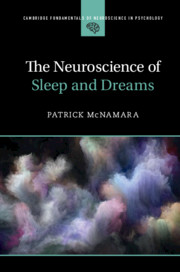Book contents
- Frontmatter
- Dedication
- Contents
- Figures
- Tables
- Preface
- Acknowledgments
- Part I Sleep
- Chapter 1 What Is Sleep?
- Chapter 2 From Biological Rhythms to the Sleep Cycle
- Chapter 3 Expression of Sleep across the Human Lifespan
- Chapter 4 Characteristics of REM and NREM Sleep
- Chapter 5 Sleep Disorders
- Chapter 6 Theories of REM and NREM Sleep
- Part II Dreams
- Appendix: Methods
- References
- Index
Chapter 3 - Expression of Sleep across the Human Lifespan
from Part I - Sleep
Published online by Cambridge University Press: 15 February 2019
- Frontmatter
- Dedication
- Contents
- Figures
- Tables
- Preface
- Acknowledgments
- Part I Sleep
- Chapter 1 What Is Sleep?
- Chapter 2 From Biological Rhythms to the Sleep Cycle
- Chapter 3 Expression of Sleep across the Human Lifespan
- Chapter 4 Characteristics of REM and NREM Sleep
- Chapter 5 Sleep Disorders
- Chapter 6 Theories of REM and NREM Sleep
- Part II Dreams
- Appendix: Methods
- References
- Index
Summary
The time it takes to fall asleep (latency) declines until midlife and then remains about the same into old age. Time spent awake after initial sleep onset (WASO) declines across the lifespan but its proportion of total sleep period increases. That is, people tend to have a greater number of awakenings as they age. REM percentages decline with age but the proportion of total sleep spent in REM remains about the same. The same is the case with N2 stage light sleep and N1 transitional sleep; these proportions remain about the same or slightly increase as people age. Finally, N3 slow wave sleep undergoes a steady decline with age until it almost completely disappears in old age. Throughout the lifespan sleep evidences intimate and possibly bidirectional causal associations with socio-emotional attachment processes between child and parent during the developmental phase and then between sexual/romantic and close friends during the adult phase. These relationships between sleep processes and attachment processes once more underline the social nature of sleep.
Keywords
- Type
- Chapter
- Information
- The Neuroscience of Sleep and Dreams , pp. 40 - 59Publisher: Cambridge University PressPrint publication year: 2019



